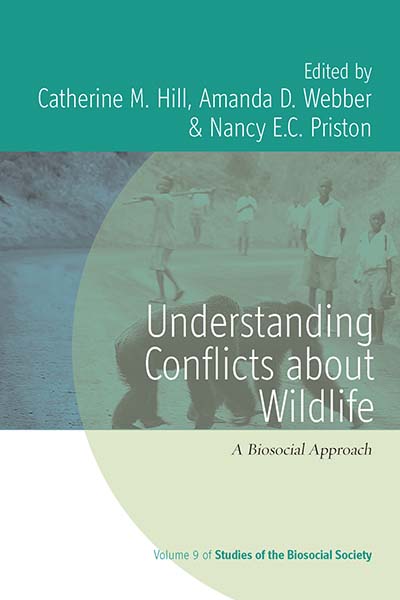Home -> Title

Contents
List of Figures and Tables
Acknowledgements
Introduction: Complex Problems: Using a Biosocial Approach to Understanding Human-Wildlife Interactions
Catherine M. Hill
Chapter 1. People, Perceptions and 'Pests': Human-Wildlife Interactions and the Politics of Conflict
Phyllis C. Lee
Chapter 2. Block, Push or Pull? Three Responses to Monkey Crop-Raiding in Japan
John Knight
Chapter 3.
Unintended Consequences in Conservation: How Conflict Mitigation May Raise the Conflict Level
- The Case of Wolf Management in Norway
Ketil Skogen
Chapter 4. Badger-Human Conflict: An Overlooked Historical Context for Bovine TB Debates in the UK
Angela Cassidy
Chapter 5. Savage Values: Conservation and Personhood in Southern Suriname
Marc Brightman
Chapter 6
. Wildlife Value Orientations as an Approach to Understanding the Social Context of Human-Wildlife Conflict
Alia M. Dietsch, Michael J. Manfredo and Tara L. Teel
Chapter 7. A Long Term Comparison of Local Perceptions of Crop Loss to Wildlife at Kibale National Park, Uganda: Exploring Consistency Across Individuals and Sites
Lisa Naughton-Treves, Jessica L’Roe, Andrew L’Roe and Adrian Treves
Chapter 8. Conservation Conflict Transformation: Addressing the Missing Link in Wildlife Conservation
Francine Madden and Brian McQuinn
Chapter 9. Engaging Farmers and Understanding Their Behaviour to Develop Effective Deterrents to Crop Damage by Wildlife
Graham E. Wallace and Catherine M. Hill
Chapter 10. Using Geographic Information Systems (GIS) at Sites of Negative Human-Wildlife Interactions: Current Applications and Future Developments
Amanda D. Webber, Stewart Thompson, Neil Bailey and Nancy E. C. Priston
Index
Understanding Conflicts about Wildlife
A Biosocial Approach
Edited by Catherine M. Hill, Amanda D. Webber and Nancy E. C. Priston
228 pages, 18 illus., bibliog., index
ISBN 978-1-78533-462-7 Hb Published (May 2017)
eISBN 978-1-78533-463-4 eBook

